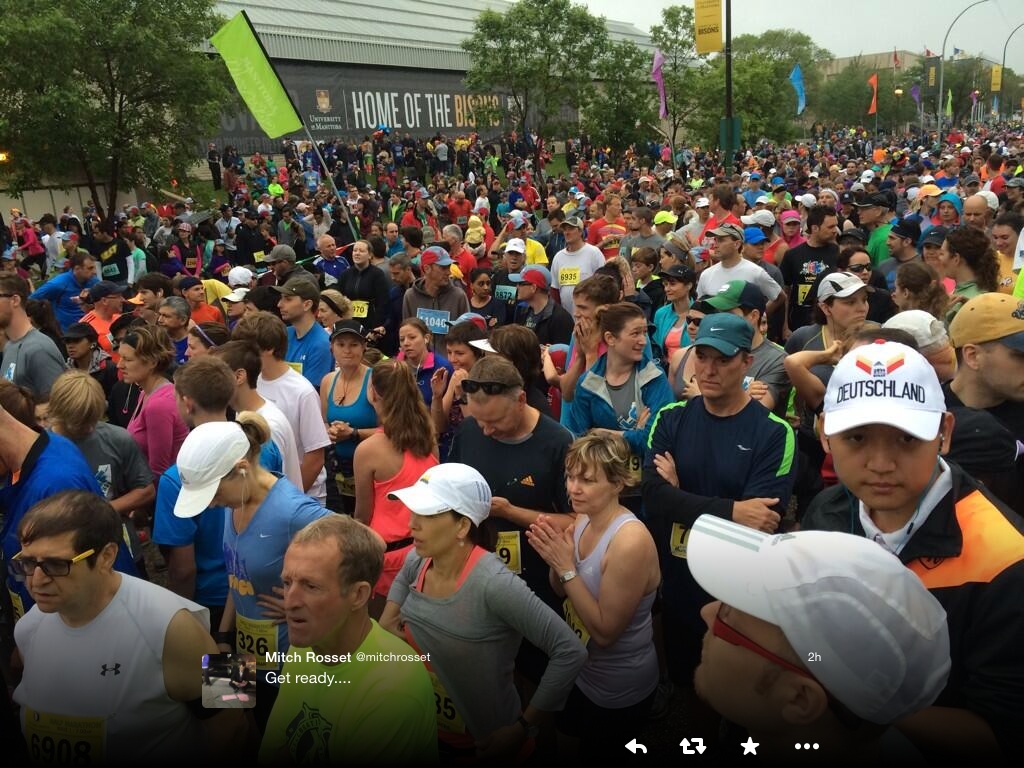WINNIPEG — With just days before the annual Manitoba Marathon kicks off, chances are the nerves are starting to kick in for those running the event for the first time. Below are five tips to help manage potential stress and increase race day success.

READ MORE: Manitoba Marathon kicks off Sunday in Winnipeg
1. Carb load
During intense, continuous exercise, your muscles become depleted of glycogen — the main source of energy during endurance events. This will typically occur after 90 minutes. The purpose of carbohydrate loading is to store extra glycogen that your muscles can then use after the original supply has been used up. Good examples of high-carb foods include pasta, sweet potatoes, brown rice and oatmeal.
With the marathon occurring on Sunday, it’s imperative that you take in a high-carb meal on Friday, in order to give your body time to digest what it’s taking in. Doing so the night before instead may result in a higher chance of cramping as well as sluggishness as the race progresses.
WATCH: How to prepare your body for race day ahead of the Manitoba Marathon

2. Know the course
While it may seem strange to memorize the course, it’s never a bad idea especially this year with the route now being reversed.
Knowing where aid and water stations are, as well as which parts of the course may be more shaded or sunny can be instrumental in finishing the race upright and smiling. If you are taking energy gels, having an understanding of where to get water is important in order to get the blood glucose into your body smoothly and prevent gagging or choking by trying to take a gel without any form of liquid.
WATCH: Manitoba Marathon switching gears in 2016

3. Bring fuel for during the race
It’s also important to bring along extra fuel in order to negate the possibility of “bonking” or “hitting the wall” due to a lack of energy — especially in the final six to eight miles of the race. The average marathoner will typically take in some form of fuel every mile. If you’re taking energy gels, the recommendation is to have one every four miles, so having four to five with you is usually a good idea.
Some of the most popular energy gel brands include GU, Powergel and Honey Stingers, while energy chews such as Cliff shot bloks, or Jelly Belly sport beans are also commonly used. If any of these items cause your stomach to get upset, less powerful substances such as honey, pretzels or gummy bears with a sprinkle of sugar can also do the trick.
- Brittney Griner recalls harsh 10-month Russian detention: ‘My life is over right here’
- NHL playoffs: The sky-high ticket prices for Round 1 home games in Canada
- Paris Olympics: Mayor vows River Seine water quality ‘will be good’
- 15-year-old Miles Russell is on a golf hot streak, smashes multiple records
4. Be consistent
This tip goes hand-in-hand with the suggestion about fueling. If you have never taken a gel or chew, trying one out for the first time on race day can lead to disaster. For example, if your fuel for long runs is a crushed up granola bar, gummy bears and with water, then testing out something like sports beans with Gatorade during the event could be detrimental. This is because your stomach is now taking in far more sugar and may not be able to adjust, potentially leading to diarrhea or vomiting.
The same rule applies for clothing. It’s not a good idea to wear a brand new shirt or socks (make sure you’re wearing polyester and not cotton to reduce chafing) on the day of the event as the chance of friction and blistering/chafing is then increased. The same rule applies to shoes. If you’re going to buy a new pair of runners for the race, make sure to get around 20 miles on them first, so that the foam in the shoe has a chance to mold to the shape of your foot.
RELATED: Young cancer survivor preparing for Manitoba Marathon ‘Super Run’
5. Respect the distance
If you’re running the full marathon, be careful not to get caught up with the energy of the crowd and run faster than you’re used to. This tends to be around miles 14-16 in the Manitoba Marathon. It’s important to remember the race is 26.2 miles long and you could be running for more than four hours. Preserving your energy is of prime importance, especially as you hit the final six miles.
One trick is to buy a “pace tattoo” which can be applied with water and tells you how fast you should be going every mile in order to attain your desired finishing time. By using the tattoo as a reference, you’ll hopefully be able to maintain consistency and have some gas left in the tank for the final few miles. If you choose to forgo the pace tattoo and instead run with a watch or just by feel, then don’t forget to listen to your body. It’s your greatest asset.



Comments